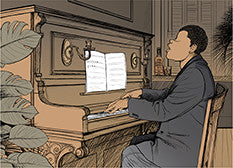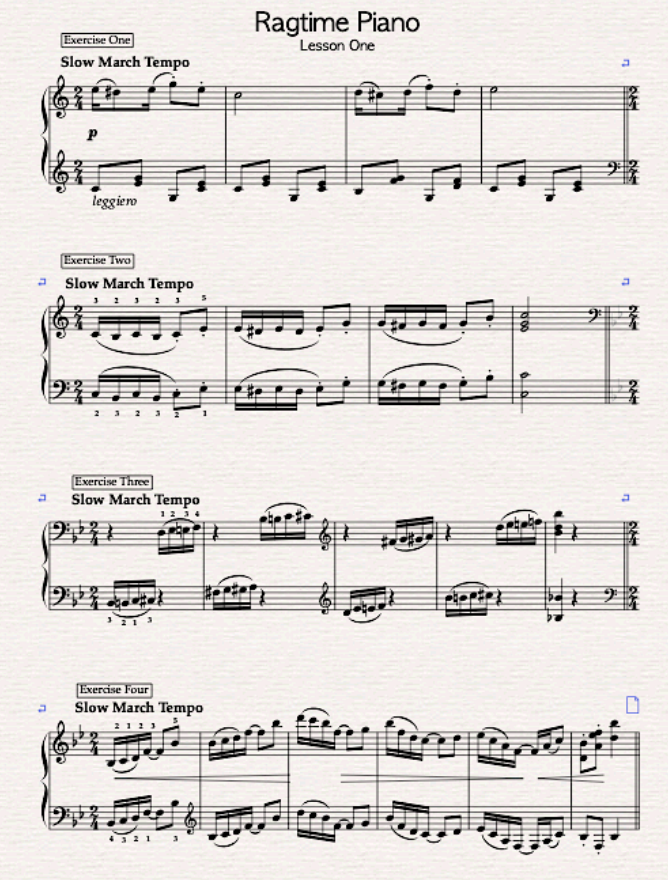

The rhythm is always syncopated - meaning that the accent of the music is on the ‘and’ of the bar, or on a beat you don’t expect.The chord is generally arpeggiated from the tonic up and are the 3rd and 5th notes of the chord.There are three main components of a basic rag roll that will help you get started. This technique refers to the right hand repeating patterns where the melody is played in octaves and 2 chord tones are added in between. Rag rolls are the best secret to learning to play ragtime piano. Mastering this technique is one of the easiest ways to get started with Ragtime improvisation as you begin to progress and start improvising, this technique will always bring you back to a solid base and more cohesive piece. Practise some simple jumps of jazz or major chord progressions, using the left pinky as the bass and the rest of the hand as the drum beat. In Ragtime, as mentioned the left hand acts as both percussion and bass, it acts as the metronome for the song and creates the groove. One of the base techniques for Ragtime piano is the jumping left hand. The three simple steps below will help exemplify this further and are a great place to begin learning Ragtime.


Whilst this may sound a little strange at first, it is easier to view each finger as trying to replicate a different part of the entire band. Rather than playing some simple chords, Ragtime piano playing likes to break them down and play them more as separate notes. Ragtime is more of a swing style and can be considered bluesy or jazzy, however it tends to lack the constant dissonance and grunge of these styles and uses more major sounding chords to create a light, airy, and fun sound. As you begin to explore other names within the ragtime world, the likes of Eubie Blake and James Scott will soon open up and are other fantastic areas of Ragtime to begin exploring.Īt first, Ragtime playing can seem a little intimidating due to the jumping movements and strange progressions not typically found in the likes of classical or even modern music, however with just a few tips and tricks, getting started with Ragtime is easy. The absolute first name that you will find when doing any level of research into the world of Ragtime piano is Scott Joplin, and for good reason! Often dubbed the ‘King of Ragtime’ and is probably the most familiar name when it comes to the style, he is perhaps best known for his pieces such as ‘The Entertainer’ or ‘Maple Leaf Rag’, both of which are fantastic places to begin a ragtime journey.

Using a fluttering combination of both on and off beat movements, players are able to mix rhythms between the right and left hands, which is what gives Ragtime that characteristic sound that is designed to make the listener move their feet and tap along. Meanwhile, the right hand in ragtime is reserved almost exclusively for playing syncopated melodies. The difficulty here is the jumps between the lowest notes and the higher end of the left hand movements, but this is often done in a rather structured manner, making it surprisingly easy to pick up once you have got the progressions mastered. The left hand represents that of the bass and percussion, with the lowest of notes aiming to replicate that of a tuba or larger brass instrument, whilst the upper movements of the left hand also represent that of steady drum patterns that keep the piece flowing in an ‘oom-pah’ rhythm. In Ragtime playing, each hand works independently, working in an almost marching like manner to keep a steady, jumping rhythm. As mentioned, the most iconic part of the ragtime playing style is that of jumping hand movements as the pianist tries to portray that of an entire band playing.


 0 kommentar(er)
0 kommentar(er)
